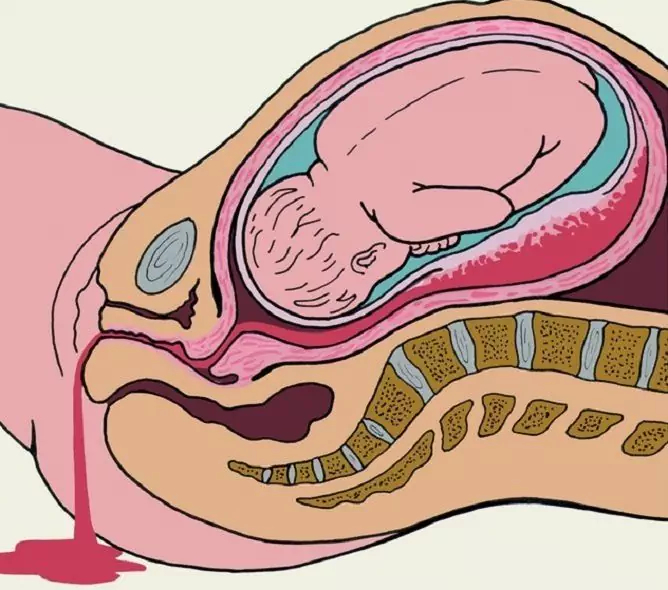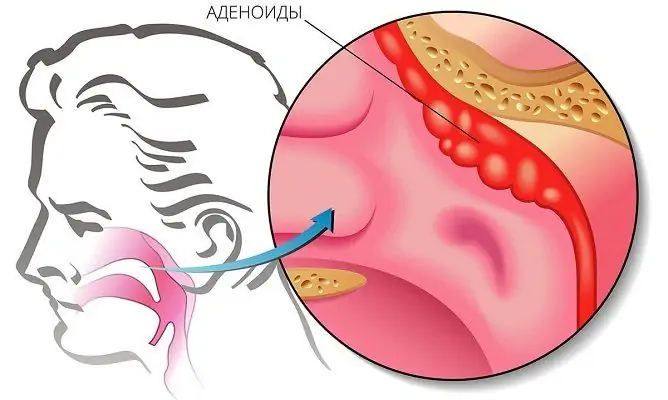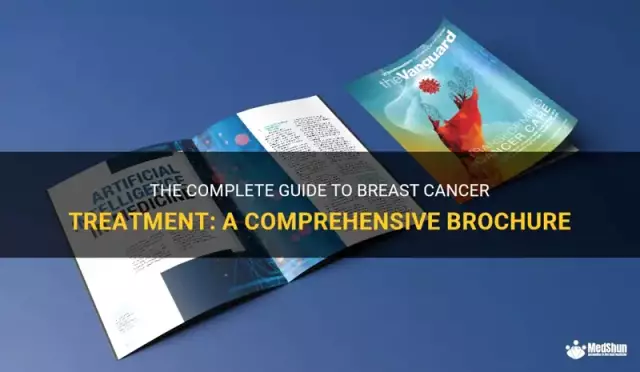- Author Rachel Wainwright [email protected].
- Public 2023-12-15 07:39.
- Last modified 2025-11-02 20:14.
Atherosclerotic cardiosclerosis
The content of the article:
- Causes
- Kinds
- Symptoms of atherosclerotic cardiosclerosis
- Diagnostics
- Treatment of atherosclerotic cardiosclerosis
- Prevention
- Consequences and complications
Atherosclerotic cardiosclerosis is a clinical syndrome that develops against the background of long-term ischemic heart disease, caused by sclerotic lesions of the coronary arteries. Insufficient blood supply to the myocardium leads to the fact that its cells are damaged and gradually replaced by connective (scar) tissue.

Atherosclerotic cardiosclerosis mainly affects middle-aged and elderly men.
Causes
The pathological mechanism of the development of cardiosclerosis is based on atherosclerosis of the coronary (coronary) arteries. In turn, impaired cholesterol metabolism leads to the development of atherosclerosis, as a result of which cholesterol plaques form on the inner walls of the arteries. Over time, they increase in size and significantly disrupt blood flow through the affected vessels.
The rate of progression of atherosclerosis of the coronary vessels is significantly influenced by:
- arterial hypertension;
- sedentary lifestyle;
- excess body weight;
- abuse of cholesterol-rich foods;
- a tendency to vasoconstriction, i.e. spasms of blood vessels;
- smoking;
- diabetes;
- taking oral contraceptives;
- hypercholesterolemia (the ratio of low density lipoproteins to high density lipoproteins is more than 1: 5);
- hypertriglyceridemia.
Atherosclerosis of the coronary arteries impairs the blood supply to the myocardium, which is accompanied by metabolic disorders and ischemia. As a result, there is a gradual atrophy of muscle fibers, ending with their death and replacement with scar tissue, that is, cardiosclerosis develops. Scar formation in the myocardium impairs its contractility, conduction of electrical impulses and thereby contributes to the further progression of coronary heart disease.
Atherosclerotic cardiosclerosis is characterized by a long course, slow progression, diffuse spread. Over time, it leads to the development of compensatory myocardial hypertrophy, expansion of the left ventricle. In the later stages, the patient develops and progresses signs of chronic heart failure.
Kinds
Depending on the characteristics of the spread of the pathological process, atherosclerotic cardiosclerosis is divided into the following types:
- diffuse - foci of sclerosis are located throughout the myocardium;
- focal (cicatricial) - the pathological process is localized in a small area of the myocardium;
- macrofocal - scars can reach several centimeters;
- small focal - characterized by the presence of small scars, the size of which does not exceed 2 mm.
Symptoms of atherosclerotic cardiosclerosis
The main symptoms of atherosclerotic cardiosclerosis are:
- violations of conduction and heart rhythm;
- progressive insufficiency of the coronary blood supply;
- violations of the contractile function of the myocardium.
For a long time, the signs of atherosclerotic cardiosclerosis are insignificant and remain unnoticed by patients. But as the disease progresses, the blood supply to the myocardium deteriorates more and more, which causes an increase in angina attacks. They are manifested by pain in the chest region, which can radiate to the epigastric region, left arm or shoulder blade. In advanced stages of atherosclerotic cardiosclerosis, the risk of occurrence and recurrence of myocardial infarction increases sharply.
The progression of cicatricial-sclerotic processes in the myocardium is clinically manifested by the following symptoms:
- fast fatiguability;
- shortness of breath (initially it is observed only during exercise, and then at rest);
- attacks of cardiac asthma;
- pulmonary edema.
Progressive chronic heart failure is accompanied by the development of congestion in the lungs, hepatomegaly, peripheral edema, accumulation of fluid in the cavities of the heart (effusion pleurisy, ascites, effusion pericarditis).
Scar tissue blocks the pathways of the heart, therefore, one of the manifestations of atherosclerotic cardiosclerosis is cardiac arrhythmias (atrioventricular and intraventricular blockade, atrial fibrillation, extrasystole). In the initial stages, the arrhythmia is paroxysmal, that is, paroxysmal in nature. Over time, attacks become more frequent and longer, then the arrhythmia becomes permanent.
Atherosclerotic cardiosclerosis is usually combined with atherosclerotic processes in the aorta and large peripheral arteries, which is accompanied by the appearance of the corresponding symptoms:
- intermittent claudication;
- dizziness;
- decreased memory;
- chronic intestinal ischemia (so-called abdominal toad);
- vasorenal arterial hypertension.
Diagnostics
The diagnosis of atherosclerotic cardiosclerosis is based on the clinical picture and anamnesis data (presence of atherosclerosis, coronary heart disease, myocardial infarction).
When conducting a biochemical blood test, an increase in beta-lipoproteins, hypercholesterolemia are revealed.
The electrocardiogram shows signs of moderate left ventricular hypertrophy, intracardiac conduction and rhythm disturbances, coronary insufficiency, and postinfarction scars.

Source: info-medika.ru
The functional reserves of the heart and the degree of myocardial dysfunction can be assessed by bicycle ergometry.
In order to detect violations of myocardial contractility (akinesia, dyskinesia, hypokinesia of the affected segment) in atherosclerotic cardiosclerosis, echocardiography is performed.
If there are indications in the diagnosis of atherosclerotic cardiosclerosis, other methods of instrumental studies are also used:
- daily ECG monitoring;
- pharmacological tests;
- rhythmocardiography;
- polycardiography;
- coronary angiography;
- ventriculography;
- magnetic resonance imaging of the heart;
- Ultrasound of the abdominal and pleural cavities;
- chest x-ray.
Treatment of atherosclerotic cardiosclerosis
Treatment of atherosclerotic cardiosclerosis is based on the treatment of individual syndromes - atrioventricular blockade, arrhythmias, hypercholesterolemia, heart failure - accompanying this pathological condition.
In the treatment regimen, drugs of the following groups are used:
- antiplatelet agents (acetylsalicylic acid);
- antiarrhythmic drugs (β-blockers, calcium and sodium channel blockers, potassium preparations, membrane stabilizing agents);
- statins - drugs that reduce the synthesis of cholesterol in the liver and thereby lower its concentration in the blood serum;
- peripheral vasodilators (nicotinic acid and its derivatives) - promote the expansion of small arteries, thereby improving coronary blood supply;
- nitrates - contribute to the expansion of the coronary arteries;
- diuretics - help to reduce edema.
For effective treatment of atherosclerotic cardiosclerosis, it is necessary to limit physical activity and adhere to a diet - table number 10 according to Pevzner. The main goals of the recommended diet are:
- optimization of conditions for normal blood circulation;
- relief of the patient's condition;
- unloading the digestive system;
- preventing kidney irritation;
- stimulation of diuresis;
- prevention of overexcitation of the nervous system.
In the diet, limit the content of foods rich in cholesterol and fiber, as well as liquids and table salt.
In a stable state, patients with atherosclerotic cardiosclerosis can be referred for a spa treatment. In particular, they are shown coniferous, radon, hydrogen sulfide, pearl and carbon dioxide baths.
Surgical treatment of atherosclerotic cardiosclerosis is carried out when an aneurysmal defect forms. Persistent conduction disturbances and rhythm disturbances are indications for implantation of a pacemaker or radiofrequency ablation.
Prevention
Prevention consists in preventing atherosclerotic vascular lesions and includes the following areas:
- normalization of body weight;
- regular physical education;
- proper nutrition;
- quitting smoking and drinking alcohol;
- timely detection of concomitant diseases (arterial hypertension, diabetes mellitus) and their treatment.
Secondary prevention of atherosclerotic cardiosclerosis is aimed at slowing the progression of the pathological process and preventing the development of severe chronic heart failure. It consists in carrying out a systematic treatment of atherosclerosis, arrhythmias, ischemic heart disease.
Consequences and complications
Atherosclerotic cardiosclerosis is characterized by a chronic, slowly progressive course. Periods of improvement can last for a long time, but repeated attacks of acute disturbance of coronary blood flow gradually lead to a worsening of the patient's condition.

Source: diabethelp.org
The prognosis for atherosclerotic cardiosclerosis is determined by many factors, primarily the following:
- the area of myocardial damage;
- type of conduction disturbance and arrhythmia;
- the stage of chronic cardiovascular failure at the time of detection of the pathology;
- the presence of concomitant diseases;
- the patient's age.
In the absence of aggravating factors, adequate systemic treatment and the implementation of medical recommendations, the prognosis is moderately favorable.
YouTube video related to the article:

Elena Minkina Doctor anesthesiologist-resuscitator About the author
Education: graduated from the Tashkent State Medical Institute, specializing in general medicine in 1991. Repeatedly passed refresher courses.
Work experience: anesthesiologist-resuscitator of the city maternity complex, resuscitator of the hemodialysis department.
The information is generalized and provided for informational purposes only. At the first sign of illness, see your doctor. Self-medication is hazardous to health!






